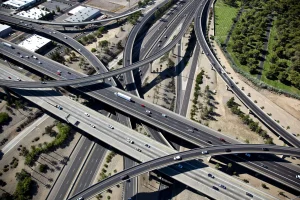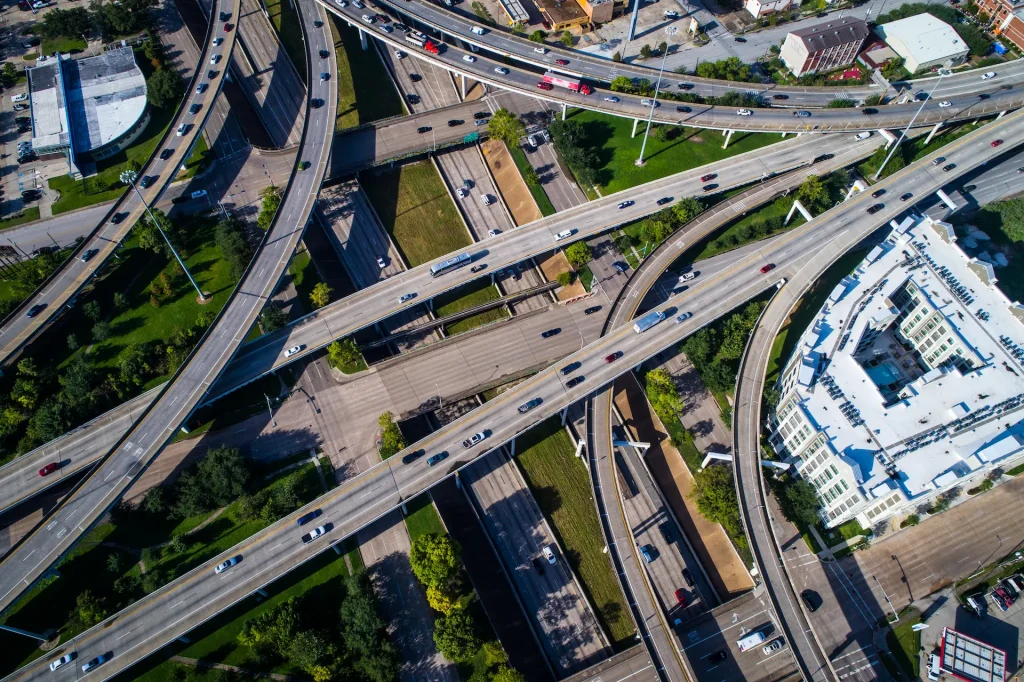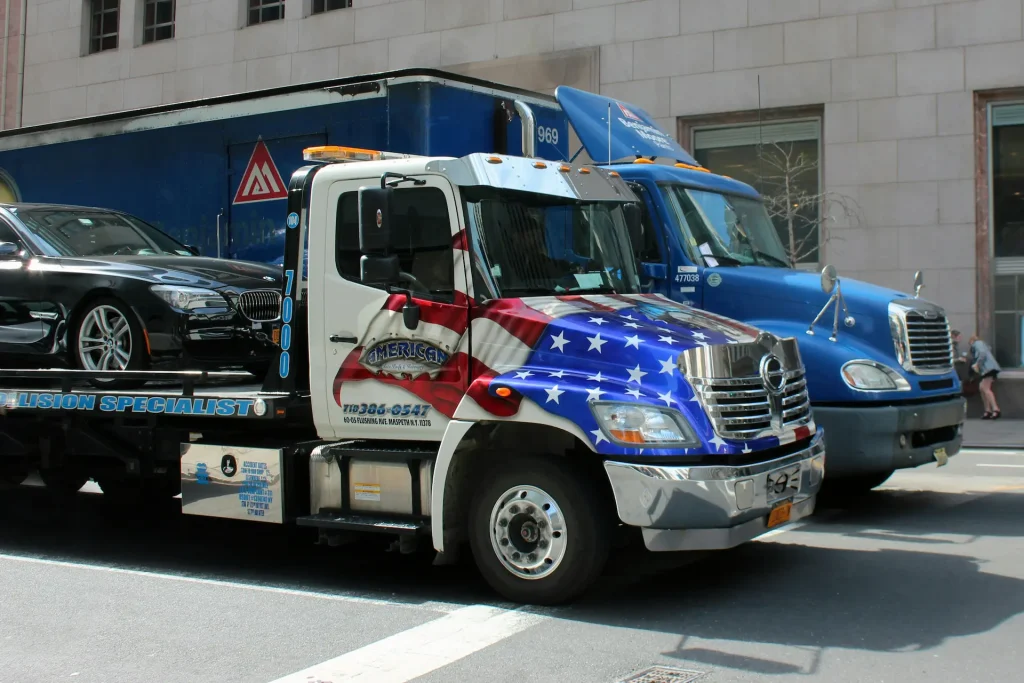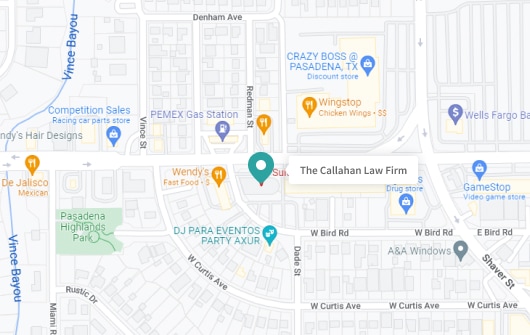Differences Between Interstate vs Intrastate Trucking

Understanding the differences between interstate and intrastate trucking is crucial for several reasons, ranging from regulatory coverage and operational logistics to insurance requirements and driver licensing. Interstate trucking involves the transportation of goods across state lines or through multiple states, while intrastate trucking is confined to the movement of goods within a single state’s borders. These distinctions carry significant legal and operational implications for trucking companies, drivers, and others involved in these matters.
If you’ve recently been involved in an accident with a truck, understanding the nuances between interstate and intrastate trucking can be pivotal in navigating the aftermath and any legal proceedings that may follow.
If you have any questions or require legal assistance, don’t hesitate to contact The Callahan Law Firm. Our experienced team is dedicated to providing personalized legal counsel and advocating for your rights, ensuring you receive the support and guidance needed to achieve a favorable outcome. Contact us today to schedule a no-cost consultation.
Definition of Interstate and Intrastate Trucking
Interstate trucking is broadly defined as the process of transporting goods across state lines. This type of trucking operation is subject to federal regulations, as it involves navigating through multiple states or between countries, requiring a broad understanding of various laws and guidelines that govern commercial transport.
In contrast, intrastate trucking refers to the delivery of goods within the boundaries of a single state, without ever crossing into another state. Operations that fall under intrastate trucking are regulated by the specific state’s laws and regulations rather than by federal authorities.
This means that the rules governing intrastate trucking can vary significantly from one state to another.
Laws and Regulations
The laws and regulations governing interstate and intrastate trucking are distinct, each designed to address the challenges and safety concerns associated with different types of trucking operations. Understanding the differences between interstate trucking vs intrastate trucking is essential for compliance and operational efficiency in the trucking industry.
Interstate Trucking Regulations
Interstate trucking falls under the jurisdiction of the Federal Motor Carrier Safety Administration (FMCSA). The FMCSA’s role is critical in ensuring the safety and efficiency of interstate commerce through a variety of regulations:
- DOT Hours of Service (HOS): These rules dictate the maximum amount of time drivers can operate their vehicles and mandate rest periods to prevent fatigue. With certain exceptions, the HOS regulations require the use of Electronic Logging Devices (ELDs) to accurately track drivers’ duty statuses and hours driven.
- Drug and Alcohol Testing: The FMCSA mandates that all CDL drivers operating commercial motor vehicles on public roads in the U.S. undergo drug and alcohol testing. This includes pre-employment, post-accident, random, reasonable suspicion, return-to-duty, and follow-up testing, ensuring that drivers performing safety-sensitive functions maintain the highest levels of safety.
There are many different regulations interstate trucks and trucking companies must follow. If you have questions regarding an accident with an interstate truck and think they may have broken a regulation, contact The Callahan Law firm today to speak with a truck accident lawyer.
Intrastate Trucking Regulations
In contrast, intrastate trucking is governed by state-specific rules and requirements, as the business conducted remains within a single state’s boundaries. An example of this can be seen in Texas:
Texas Department of Public Safety: Intrastate trucking in Texas is mostly regulated by the Texas Department of Public Safety, which offers guidelines distinct from the FMCSA’s federal regulations. Notably, Texas intrastate drivers are not bound by the Hours of Service regulations that apply to interstate commerce.
Texas has its own HOS rules, which are generally more permissive compared to federal standards. This gives drivers more flexibility regarding driving and on-duty time when operating solely within the state.
However, drivers must recognize that federal rules take precedence once they leave Texas. To comply with FMCSA regulations, drivers must adjust their operations accordingly when crossing state lines and then revert to Texas-specific regulations upon returning.
Insurance Requirements
In the world of trucking, whether it involves crossing state lines or operating solely within a single state like Texas, it’s absolutely critical to know the insurance requirements for legal operation and financial protection. These can vary significantly based on factors such as the vehicle’s size, the type of cargo it carries, and the scope of its operations (interstate vs. intrastate).
Intrastate Insurance Requirements
Large commercial trucks operating within Texas are subject to insurance rules, which reflect the potential for more significant damages and injuries that these vehicles can cause compared to smaller trucks and motor vehicles.
For instance, commercial motor vehicles exceeding 26,000 pounds in weight that are involved in the transport of household goods within Texas are required to carry at least $500,000 in liability insurance. This amount is designed to cover the higher risks associated with the operation of larger vehicles, including possible severe injuries and extensive property damage in the event of an accident.
Trucks that weigh 26,000 pounds or less and are engaged in the intrastate transport of household goods are subject to a lower minimum liability insurance requirement of $300,000. This differentiation in insurance coverage minimums acknowledges the varied levels of risk and potential damage associated with the size of the vehicle and the nature of its cargo.
Interstate Insurance Requirements
The FMCSA requires insurance coverage ranging from $750,000 to $5,000,000, depending on the cargo type being transported. This federal regulation underscores the increased risks and liability associated with interstate trucking, especially when hazardous materials are involved, necessitating higher insurance coverage to ensure adequate protection against claims arising from accidents.
Both state and federal insurance requirements serve to safeguard the interests of the public, the trucking industry, and the economy by ensuring that commercial vehicles carry adequate insurance coverage.
Legal Implications
The distinction between interstate vs intrastate trucking and commerce has significant legal implications for trucks operating within these confines, especially in terms of regulatory compliance, insurance requirements, and liability in the event of an accident.
- Varied Safety Standards: The discrepancy in regulatory standards can lead to variations in safety practices, potentially affecting the frequency and severity of accidents. Adherence to state-specific safety regulations will be scrutinized, which could influence outcomes in personal injury or property damage claims.
- Lower Compensation: In accidents involving intrastate commercial trucks with the minimum required insurance coverage, the available compensation for injured parties might not fully cover the extent of severe injuries or property damage, especially in catastrophic incidents.
For those injured in trucking accidents, the distinctions and difficulties in trucking regulations highlight the need for skilled legal representation that is familiar with the nuances of interstate versus intrastate commerce.

Identifying Interstate vs Intrastate Trucking
Determining whether a truck is engaged in interstate or intrastate trucking involves understanding the nature of its operations, specifically whether it transports goods or passengers across state lines or solely within the confines of a single state. This distinction is crucial for regulatory, insurance, and compliance purposes. Here are key factors and identifiers that can help in making this determination:
Registration Numbers
- Federal DOT Number: Trucks engaged in interstate commerce are required to be registered with the Federal Motor Carrier Safety Administration (FMCSA) and display a U.S. Department of Transportation (DOT) number. This unique identifier signals that the vehicle is subject to federal regulations governing safety, insurance, and hours of service.
- State DOT Number: Some states also require trucks operating intrastate to register and display a state-specific DOT number (now called a TxDMV number). This indicates that the truck is operating under the regulations and standards set forth by the state.
These registration numbers are not just bureaucratic formalities; they play a pivotal role in identifying and regulating commercial vehicles’ operations. In the event of an accident or inspection, these numbers can be used to quickly ascertain the regulatory framework governing the truck, facilitating compliance checks and enforcement actions.
Significance of Displaying DOT Numbers
The requirement to display federal or state DOT numbers on trucks serves several important purposes:
- Regulatory Compliance: Displaying the appropriate DOT number signifies that the truck and its operator are registered and compliant with the relevant regulatory authorities, whether federal or state.
- Safety and Accountability: The DOT number provides a way to look into information regarding a trucking company, such as their safety records, inspection reports, and compliance history. This promotes accountability and enables easier tracking of a vehicle’s adherence to safety standards.
- Public and Law Enforcement Utility: For the public and law enforcement officials, visible DOT numbers provide a way to report safety concerns or violations.
Understanding whether a truck is engaged in interstate or intrastate trucking is fundamental to ensuring that it meets the appropriate legal and safety standards. Ultimately, if you’re in an accident and you need to know if the truck involved was involved in interstate or intrastate trucking, reach out to The Callahan Law Firm right away; we’re here to help.
Trucks Commonly Used in Interstate and Intrastate Trucking
Trucks play a pivotal role in the transportation and logistics industry, serving both interstate and intrastate operations. Each type of truck is designed to meet specific cargo needs, and understanding the risks associated with each is crucial for ensuring safety, compliance, and efficiency.

Here’s a list of truck types commonly used in both interstate and intrastate trucking, along with an overview of the importance of recognizing their specific risks:
- Semi-Trucks (18-Wheelers): The backbone of long-haul trucking, semi-trucks are crucial for transporting a wide variety of goods across state lines. Their size and weight contribute to significant damage in accidents.
- Box Trucks: Often used for delivery services and moving household goods, box trucks are common in both interstate and intrastate operations. Their use in urban environments comes with risks related to visibility and maneuverability.
- Flatbed Trucks: Used to transport heavy or oversized loads such as construction materials, flatbed trucks are prevalent in both types of trucking. The open nature of their cargo space introduces risks related to securing loads properly to prevent accidents.
- Tanker Trucks: Transporting liquids or gasses, tanker trucks are critical for both interstate and intrastate operations. The hazardous materials often carried by these trucks pose significant risks in case of spills or leaks during accidents.
- Refrigerated Trucks: Essential for transporting perishable goods across long distances, refrigerated trucks face risks related to maintaining appropriate temperatures in addition to standard driving hazards.
- Dump Trucks: Primarily used in construction and intrastate operations, dump trucks transport materials like sand, gravel, and demolition waste. The risk of tipping due to uneven loads or during unloading is a specific concern.
- Utility Trucks: Serving specific functions such as repair services or electrical work, utility trucks are more common in intrastate activities. They often carry equipment that may extend beyond the vehicle’s frame, posing safety risks.
- Concrete Mixing Trucks: These trucks are equipped with a rotating drum to mix concrete and transport it to construction sites. The heavy load and the need to keep the concrete moving to prevent it from setting present specific challenges, including the risk of rollover due to the shifting weight of the concrete, especially on curves or during sudden maneuvers.
- Bucket Trucks: Often used by utility and tree service companies, bucket trucks are equipped with a long arm and a bucket in which a worker can be lifted to perform tasks at height, such as repairing power lines or trimming trees. The primary risks associated with bucket trucks include tipping due to improper stabilization or overreaching, as well as the safety of the worker in the bucket when operating near electrical wires or at significant heights.
- Tow Trucks: Tow trucks are used to move vehicles due to mechanical failure, involvement in an accident, or for legal reasons (such as impoundment). Operating a tow truck comes with risks related to the secure attachment and transportation of the towed vehicle, as well as maneuvering a vehicle that is significantly heavier and longer than standard trucks, which can affect braking and turning.
By recognizing each truck type’s distinct characteristics and associated risks, operators can implement targeted strategies to mitigate accidents, enhance road safety, and ensure the smooth transportation of goods, whether across the country or within a single state. Understanding these risks can also remind other drivers on the road to be aware and extra cautious around these types of vehicles.
Contact The Callahan Law Firm Today For a Free Consultation
Understanding the nuances between interstate and intrastate trucking is crucial for anyone involved in the transportation industry or anyone involved in an accident with a commercial truck. If you need help, it’s a good idea to reach out to a trucking accident attorney as soon as possible. The Callahan Law Firm has extensive experience in transportation law and a deep understanding of both interstate and intrastate trucking regulations. Contact us today to schedule a no-cost consultation.

Michael S Callahan is an attorney and founder of The Callahan Law Firm. He focuses his practice on representing individuals and families in personal injury cases involving motor vehicle and truck accidents, workplace accidents and defective products. With over 25 years of experience, he is dedicated to fighting on behalf of people whose lives have been forever altered by the negligence and carelessness of corporations and individuals. Originally trained as a mechanical engineer, Michael has been practicing law and fighting for justice for those who need it most since 1994. He is board-certified in Personal Injury Trial Law by the Texas Board of Legal Specialization and a member of various esteemed legal associations. Outside of work, Michael enjoys spending quality time with his family, outdoor activities, and continually striving to improve as a trial lawyer and human being.











